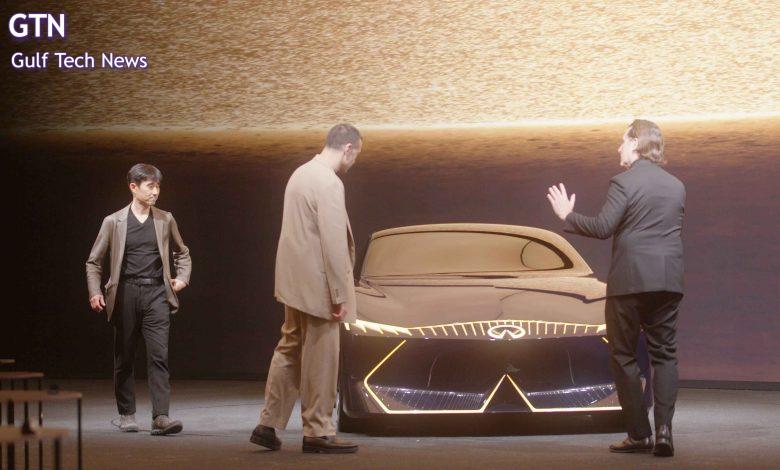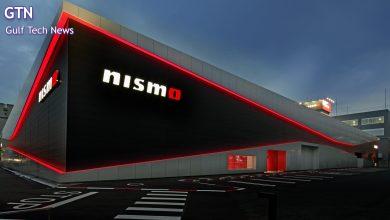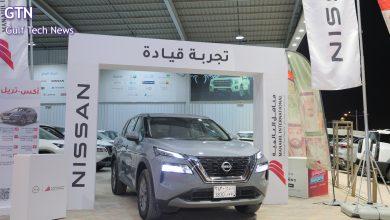Mohammed Al Turki Experiences Exceptional Japan with INFINITI

INFINITI Middle East’s Chief Luxury Ambassador, Mohammed Al Turki, recently travelled through Tokyo and Kyoto to explore the inspirations behind the brand’s human-centric design and Japanese heritage. Captured in a new content series, the journey is less about itinerary, and more about what he saw, tasted, and experienced, through INFINITI’s vision of modern Japanese luxury.
Design Inspired by Movement and Nature
At the Enoura Observatory in Odawara, Mohammed encountered the Japanese concept of Utsuroi, a philosophy which refers to seamless transition. Surrounded by minimalist structures that shift with light and season, he was reminded of how INFINITI’s vehicles are said to be “shaped by the wind.” Both are modern yet timeless tributes to heritage, rooted in tradition and designed for the present.
This sense of movement continued with a ride on the Shinkansen, Japan’s legendary bullet train. Since its debut in 1964, it has become a symbol of the country’s post-war innovation. Sleek, fast, and remarkably quiet, it remains one of the most efficient and sophisticated ways to explore Japan.
In Tokyo’s Shinagawa district, Archi-Depot, Japan’s only architectural model museum, is housed in a minimalist warehouse. The space features study maquettes and final models from renowned architects like Shigeru Ban, Riken Yamamoto, and Kengo Kuma.
Kuma’s work is inspired by nature, particularly his use of traditional materials like bamboo, which in Japanese tradition symbolizes strength, resilience, and purity. This connection echoed in the INFINITI QX80, whose grille design takes inspiration from the structure of a bamboo forest.
Craftsmanship, Color, and Material
At Pigment Tokyo, Mohammed explored a color laboratory designed by world-renowned architect Kengo Kuma, whose work has directly influenced features in INFINITI’s vehicle designs. The space is a creative playground where pigment, texture, and materials come together in harmony. In a private workshop, he learned traditional Japanese painting techniques and experimented with natural pigments, reflecting on INFINITI’s color mastery, like the moonbow-inspired QX60 hue and the QX80’s Dynamic Metal finish, developed over seven years, along with the rich red interiors inspired by benibana, the traditional Japanese art of flower dyeing. The experience highlighted the deep artistry and heritage woven into every detail of Japanese craft, along with INFINITI’s purposeful, story-driven design.
This theme continued at Hosoo Gallery, home to one of Japan’s most esteemed textile houses, founded in 1688 and known for serving the imperial family and shogunate elite. Now led by Masataka Hosoo, the brand is redefining heritage by combining centuries-old multi-thread weaving and natural dyeing techniques with a contemporary vision.
Like INFINITI, Hosoo honors tradition by reimagining it for the present, embracing the philosophies of mitate, the thoughtful curation of materials, and shitate, the refinement that reveals true essence. Both brands understand that luxury is not just about the final creation but about elevating every step of the journey.
The artistry of the kimono came to life through two distinct lenses, first at Hattori Orimono, a 200-year-old family workshop preserving traditional weaving techniques, and then at Jotaro Saito’s atelier, where bold patterns and modern silhouettes reimagined the garment for a new generation.
The contrast between heritage and innovation is like INFINITI’s design philosophy of Kabuku, pairing beauty with emotional depth. From the QX60’s sculpted curves to its refined materials, every detail reflects this blend.
Moments of Calm and Tranquility
At Ryosokuin, a tranquil temple in the heart of Kyoto, Mohammed experienced a meditative garden walk and private tea ceremony. This ritual, which inspired INFINITI’s original ownership philosophy in the 1980s, served as a reminder that true luxury is intentional. Surrounded by stillness, the temple’s design contains the same harmony INFINITI builds into every vehicle.
A serene cabin encasing a powerful engine, where true luxury lies in the connection between driver, car, road, and landscape, transforming movement into a meaningful experience.
At Ninna-ji Temple, a UNESCO World Heritage Site founded in 888 AD, the idea of Kabuku, beauty that stirs something deeper, was once again brought to life. The temple is known for its rare, late-blooming cherry blossoms, a natural symbol of patience and beauty.
Just like INFINITI’s design language, the temple’s quiet architecture, symmetry, and harmony with nature spoke volumes. It was a reminder that true luxury doesn’t need to demand attention; it simply holds it.
A Taste of Storytelling and Hospitality
At WAGYUMAFIA, a members-only wagyu dining concept, tradition was reimagined with flair, much like INFINITI’s entry into the luxury market in the 1980s. While other luxury car brands embraced extravagance, INFINITI redefined modern Japanese luxury, placing the customer experience at the center.
An exclusive lunch at Sushi Tou offered an intimate omakase experience. The setting was designed not to impress, but to put the guest at ease. This experience, rooted in exclusivity, detail, and care, mirrored INFINITI’s design philosophy, from the QX80’s welcoming light symphony, to features like individual audio that prioritize personal comfort. Even beyond the vehicle, the INFINITI Beyond membership program extends this ethos, offering curated experiences that reflect a deeply human approach to modern luxury.
A private dinner at Kikunoi, one of Kyoto’s most celebrated restaurants, brought the experience to its sensory peak. Every dish told a story. A bamboo flute performance by Tosya Kisho and a traditional Maiko dance added a cultural richness, much like INFINITI’s sound signature and timeless elegance. It was an evening that embodied INFINITI’s values: human, daring, and forward.
At Isshi Souden Nakamura, a Michelin-starred Kyoto institution established in the mid-1800s, led by sixth-generation chef Motokazu Nakamura, a quiet multi-course meal closed the journey’s culinary chapter. It was a tribute to seasonal flavors and centuries-old tradition, presented with precision and heartfelt hospitality. The experience felt deeply personal and quietly powerful, echoing the attention to detail, pride in craftsmanship, and thoughtful care that lie at the heart of INFINITI, reflected in its design ethos.
Where It All Comes Together
While every stop along the way revealed a facet of Japanese craft, culture, or hospitality, it was the Nissan Global Design Center in Atsugi that tied it all together. Tucked away from the city’s buzz, this is where INFINITI’s future takes shape.
There, among sketches, prototypes, and conversations with Alfonso Albaisa, Senior VP Global Design, Nissan Motor Co. Ltd., and Taisuke Nakamura, Head of INFINITI Design, Mohammed saw how each inspiration is translated into real-world design. At the heart of it all is a single principle: Human. INFINITI’s mission is rooted in creating vehicles and experiences that prioritize people, not just in how they drive, but in how they feel.
Every experience in Japan offered a renewed understanding of what defines true luxury, something not loud or fleeting, but intentional, lasting, and refined. From Tokyo’s creative studios to Kyoto’s quiet temples, it became clear that luxury isn’t just about design or service, but about the thought, creativity, and generations of artistry behind every detail.
The recently launched content series invites audiences to immerse themselves in INFINITI and its spiritual home.




